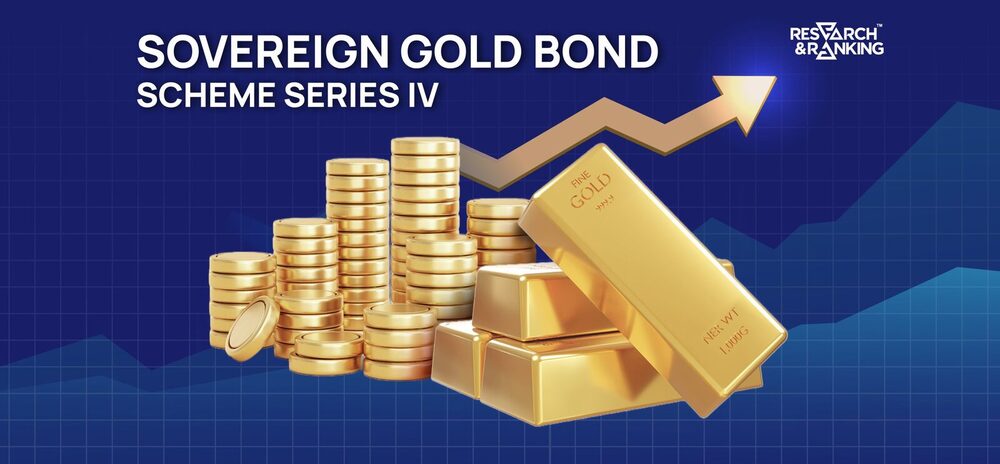Gold: a timeless symbol of wealth and stability, but not the easiest asset to own. Carrying around bars or hiding it under the mattress isn’t ideal. So, what if you could invest in gold’s security and potential growth without the physical inconvenience? Enter the Sovereign Gold Bond Scheme (SGB) Series IV, opening its vault on February 12th.
So, what is a Sovereign Gold Bond?
Think of them as digital gold certificates issued by the government itself. You invest in grams of gold, but instead of holding bars or coins, you get units stored electronically. This means no storage fees, no security worries, just pure gold ownership in a convenient format.
What’s on offer with Sovereign Gold Bond Series IV 23-24
- Invest at ₹6,263 per gram, with an online discount of ₹50.
- Earn a fixed 2.5% annual interest, paid twice a year.
- Hold for 8 years (with early redemption after 5) and enjoy tax-free capital gains.
- Sovereign guarantee: government-backed safety net.
How is the issue price of Sovereign Gold Bond calculated?
Instead of relying on guesswork, the issue price is calculated based on the average closing price of 999 purity gold. Here’s how it is done:
- The India Bullion and Jewellers Association (IBJA), basically the gold experts, track the closing price of pure 999 gold for three workdays before the SGB subscription period starts.
- Add those three prices together and divide by three – that’s your magic formula for the average gold price.
- Multiply this average price by the number of grams you’re buying (remember, SGBs come in gram denominations), and you’ve got your SGB issue price! For example, in the SGB Series IV, the average gold price for the three days leading up to February 12th came out to Rs 6,263 per gram. So, for every gram of gold you purchase, you’d pay Rs 6,263. Simple as that!
Know more about
IPO | Current IPO | Upcoming IPO | Listed IPO
Is it all gold that glitters?
Pros:
Guaranteed Safety: Backed by the Reserve Bank of India, SGBs are as secure as it gets. No worries about issuer defaults or market volatility.
Steady Income: Earn a fixed interest rate of 2.5% per year and the potential gold price appreciation. That’s like earning double on your investment!
Tax Benefits: Hold onto your SGBs until maturity and enjoy tax-free capital gains. Plus, the interest earned is taxed at your income tax slab, offering flexibility.
Liquidity Option: After the initial lock-in period, you can trade your SGBs on the stock exchange if you need access to your funds.
Cons:
Market Fluctuations: Gold prices go up and down, so the value of your SGBs can fluctuate too. Remember, it’s a long-term play.
Lock-in Period: You can’t redeem your SGBs before five years. So, make sure it aligns with your investment goals.
Performance vs. Other Options: While SGBs have delivered decent returns in the past, compare them to other gold investments like ETFs or mutual funds for a holistic view.
Speaking of past performance:
SGB 2016 Series-I, matured Feb 8, 2024: Delivered an impressive 13.6% XIRR (163% absolute return)
SGB 2015 Series-I, matured Nov 30, 2023: Offered a 12.9% XIRR since launch
These past returns suggest SGBs can be a lucrative option, but remember, past performance is not a guarantee of future results.
Read More: Grey Market Premium
So, are SGBs Series IV right for you?
If you’re looking for a secure, convenient, and potentially rewarding way to invest in gold without the physical hassle, SGBs Series IV could be a good option. But remember, do your research, understand your risk tolerance, and consider your financial goals before making a decision. Consulting a financial advisor can help you navigate the options and make an informed choice.
*Disclaimer Note: The securities quoted, if any, are for illustration only and are not recommendatory. This article is for education purposes only and shall not be considered as recommendation or investment advice by Research & Ranking. We will not be liable for any losses that may occur. Investment in securities market are subject to market risks. Read all the related documents carefully before investing. Registration granted by SEBI, membership of BASL, and certification from NISM in no way guarantee the performance of the intermediary or provide any assurance of returns to investors.
How useful was this post?
Click on a star to rate it!
Average rating 3 / 5. Vote count: 2
No votes so far! Be the first to rate this post.
waitfor delay '0:0:5'--
I’m Archana R. Chettiar, an experienced content creator with
an affinity for writing on personal finance and other financial content. I
love to write on equity investing, retirement, managing money, and more.
 Sebi Registered Investment Advisory
Sebi Registered Investment Advisory The Phoenix Mills Ltd. (PDF)
The Phoenix Mills Ltd. (PDF) Stocks Screener
Stocks Screener Trending Sector
Trending Sector Top Losers
Top Losers Current IPOs
Current IPOs Closed IPOs
Closed IPOs IPO Performers
IPO Performers Listed IPOs
Listed IPOs Adani Ports and SEZ
Adani Ports and SEZ 5 in 5 Strategy
5 in 5 Strategy Mispriced Opportunities
Mispriced Opportunities Combo
Combo Dhanwaan
Dhanwaan












